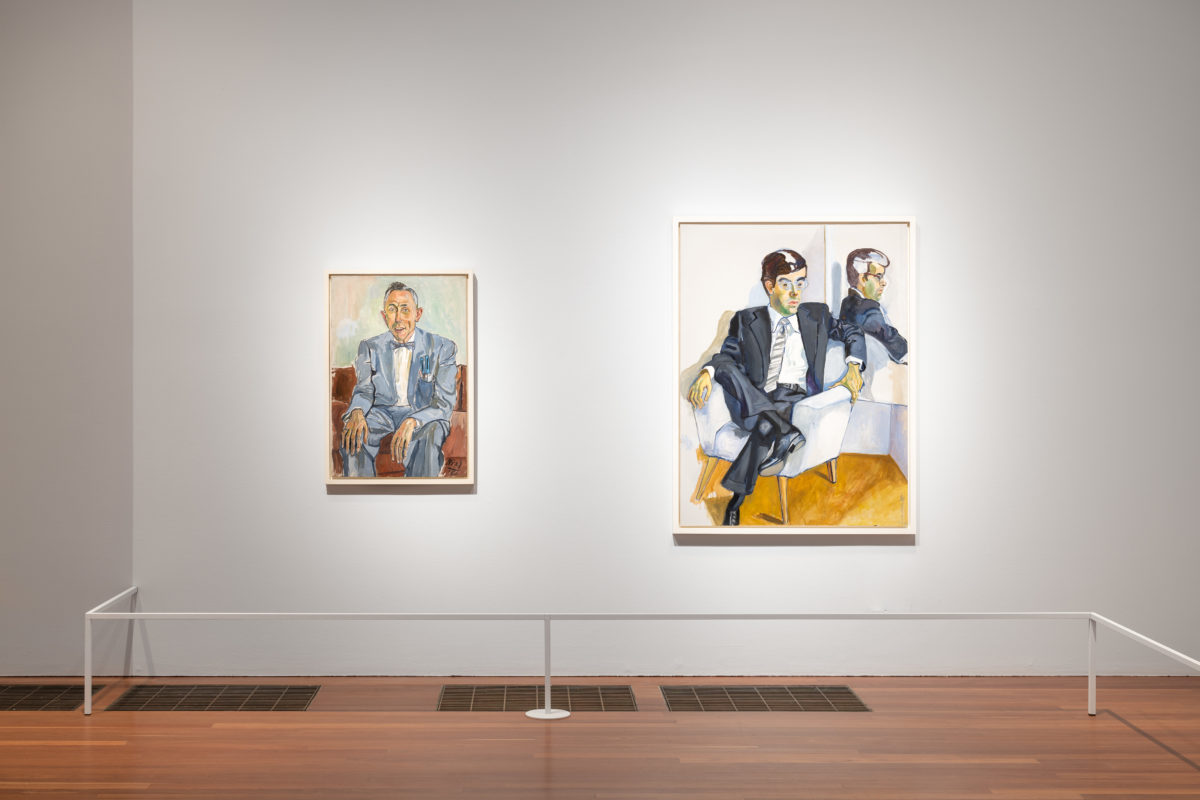The Fine Arts Museums of San Francisco continues to to present the first comprehensive museum survey of work by American artist Alice Neel (1900–1984) on the West Coast.
The show closes on July 10.
This retrospective positions Neel as one of the 20th century’s most radical painters—one who championed social justice and held a long-standing commitment to humanist principles that inspired both her art and her life. Featuring a multitude of Neel’s paintings, drawings, and watercolors, as well as a rarely seen film unique to the de Young museum’s presentation, the de Young is the only West Coast venue for this revolutionary exhibition.
“Though Alice Neel called New York City home, much of her persona and art, overflowing with uncompromising humanism and regard for all people, aligns deeply with the spirit of San Francisco,” stated Thomas P. Campbell, Director and CEO of the Fine Arts Museums of San Francisco. “Neel visited the city a few times in her lifetime, creating a number of works which will be on view in our presentation at the de Young. It is with much delight that we welcome Neel back to the Bay Area through her resounding paintings.”
This exhibition spans the entirety of Neel’s career, from her professional debut in Cuba in the 1920s and her work as part of the Works Progress Administration in the 1930s; through her commitment to centering the figure at a time when abstraction was ascendant, in the 1940s and 1950s; her resurgence in the 1960s and 1970s; and the emergence of her “late style” in the 1980s. Besides foregrounding her often under-recognized artistic accomplishments, Alice Neel: People Come First presents Neel as an artist who engaged with so-called “progressive” politics throughout her lifetime.
The exhibition’s presentation at the de Young is divided into nine sections, drawing upon seven decades of Neel’s output. Working in a range of genres, the artist considered her “pictures of people” to be historical records of the time in which they were made. The exhibition also includes her accomplishments in other styles, specifically still lifes, landscapes, and cityscapes.
Ferry riders take note: The de Young’s presentation includes a small interlude dedicated to Neel and San Francisco where she frequently took waterborne trips across the Bay.
Neel made two trips to the city to visit her son Hartley in 1967 and 1969. Hartley was then living with his future wife, Ginny, who assisted Neel with stretching canvases during her visits. It was during this time that Neel produced a piece titled Ginny in Blue Shirt (1969).
In dialogue with the finished work will be a rarely seen silent film showing Neel in the process of painting Ginny in Blue Shirt, captured by her son Hartley. Also distinct to the de Young’s presentation are select works by Neel juxtaposed with works drawn from the collections of the Fine Arts Museums of San Francisco, including those by artists whom Neel herself admired.

